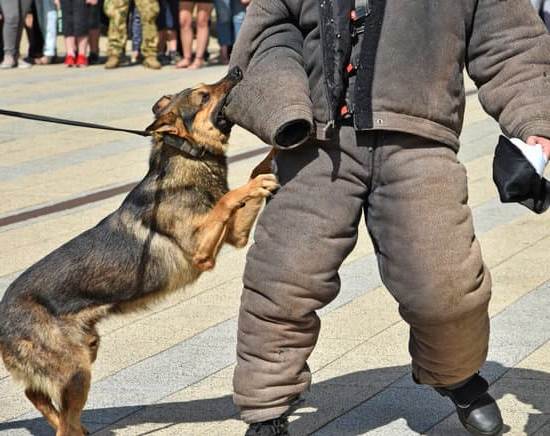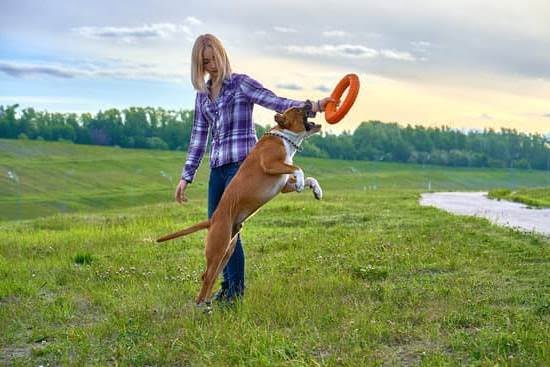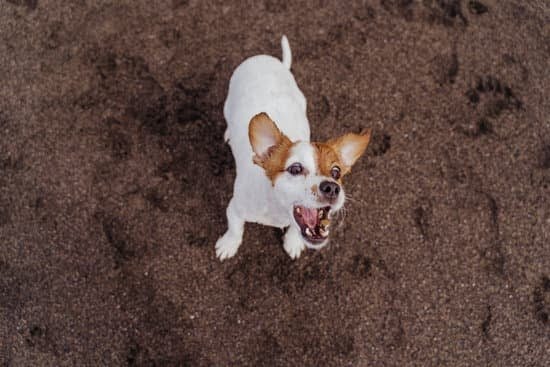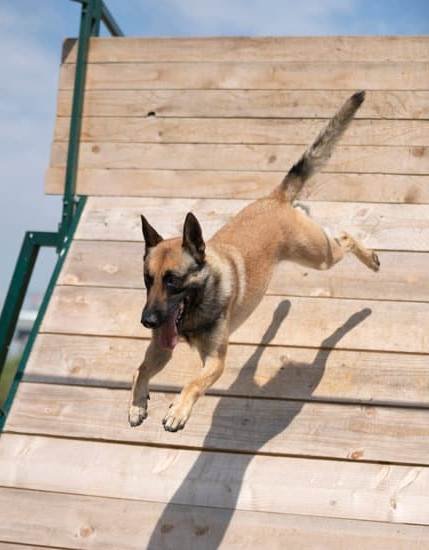Training your dog to stay in one room is essential for their safety, your peace of mind, and overall harmony in your home. Whether you need them to stay put while visitors are over or you want to limit their access to certain areas, teaching your furry friend this skill can benefit both of you. Understanding your dog’s behavior and instincts is crucial in effectively training them to stay in one room.
Dogs are naturally inclined to follow their instincts and roam freely, making it challenging to confine them to a specific area. However, by setting up the ideal environment for training and using positive reinforcement techniques, you can successfully teach your dog the stay command. Consistency is key in establishing boundaries and reinforcing the desired behavior, ensuring that they understand what is expected of them.
By implementing gradual increases in the time spent in the room and utilizing treats and rewards effectively, you can reinforce the stay command and celebrate small victories along the way. Troubleshooting common challenges that may arise during training will also help you overcome obstacles and continue progressing towards your goal of having a well-trained dog who can stay in one room peacefully.
Understanding Your Dog’s Behavior and Instincts
Dogs are naturally social animals that thrive on being around their human companions. However, there are times when it is necessary to train your dog to stay in one room for various reasons such as safety concerns or having guests over. Understanding your dog’s behavior and instincts will play a crucial role in successfully training them to stay in one room.
Here are some key points to consider when understanding your dog’s behavior and instincts:
- Dogs are pack animals: Dogs have an innate instinct to be part of a pack, whether it be their human family or other dogs. When training your dog to stay in one room, you may encounter resistance due to their desire to be with you.
- Separation anxiety: Some dogs may experience separation anxiety when separated from their owners or taken away from familiar surroundings. This can manifest in behaviors like whining, pacing, or destructive behavior.
- Territory marking: Dogs have a natural tendency to mark their territory through scent marking. When confined to one room, they may exhibit behaviors like scratching or urinating to establish that space as their own.
By understanding these aspects of your dog’s behavior and instincts, you can tailor your training approach to effectively teach them how to stay in one room without distress or disobedience.
Setting Up the Ideal Environment for Training
When it comes to training your dog to stay in one room, setting up the ideal environment is crucial for success. Dogs are creatures of habit and creating a space conducive to learning will greatly aid in the training process. Start by choosing a room with minimal distractions where your dog can focus on the task at hand. Remove any items that may tempt your dog to wander off or become disinterested during training sessions.
In addition, it is important to make sure the room is safe and secure for your furry friend. Remove any potential hazards or toxic substances that your dog could potentially get into while you are not supervising them. Providing a comfortable and cozy space with their favorite toys or bedding will also help create a positive association with staying in that room.
To further enhance the training environment, consider using baby gates or barriers to restrict your dog’s access to other parts of the house. This will help reinforce the idea that they are meant to stay in the designated room during training sessions. By creating a calm and controlled environment, you are setting both yourself and your dog up for success in learning how to stay in one room.
By taking the time to set up an ideal environment for training, you are laying down a solid foundation for teaching your dog to stay in one room effectively. Remember, patience and consistency are key when working with your furry companion. With a conducive environment and proper training techniques, you can successfully achieve your goal of keeping your dog in one room when needed.
Teaching Your Dog the Stay Command
Training your dog to stay in one room is an essential skill that can provide safety and peace of mind for both you and your furry companion. One of the key components of achieving this behavior is teaching your dog the ‘stay’ command. This command is crucial in establishing boundaries and ensuring that your dog remains in a specific area when needed. Here are some steps on how to effectively teach your dog the stay command:
1. Start with Basic Commands: Before introducing the ‘stay’ command, make sure your dog has mastered basic commands such as sit, stay, and come. This will create a foundation for learning more advanced commands like ‘stay.’
2. Use Positive Reinforcement: When teaching your dog the stay command, it’s important to use positive reinforcement techniques. Rewarding your dog with treats, praise, or toys when they successfully stay in one room will reinforce this behavior.
3. Practice in Short Increments: Begin practicing the stay command in short increments, gradually increasing the time as your dog becomes more comfortable with staying in one room. Start by having your dog ‘stay’ for a few seconds before releasing them with a release word like “okay” or “free.”
By following these steps and being consistent with your training efforts, you can effectively teach your dog to stay in one room. Remember to remain patient and provide plenty of positive reinforcement during training sessions to help reinforce this behavior. With dedication and practice, you’ll soon celebrate success in having a well-trained dog who can comfortably stay in one room when needed.
Positive Reinforcement Techniques for Training
Positive reinforcement is a powerful tool when it comes to training your dog to stay in one room. By using positive reinforcement, you can encourage good behavior and create a positive association with following commands. This technique involves rewarding your dog for obeying the command to stay in the room, reinforcing the desired behavior.
Use Treats as Rewards
One effective way to implement positive reinforcement is by using treats as rewards. When teaching your dog to stay in one room, have a treat ready to give them each time they successfully follow the command. Make sure to use high-value treats that your dog finds especially appealing, such as small pieces of chicken or cheese. This will motivate your dog to continue obeying the command.
Use Verbal Praise and Affection
In addition to treats, verbal praise and affection are also important forms of positive reinforcement. Whenever your dog stays in the room as instructed, make sure to praise them enthusiastically with phrases like “good boy/girl” or “well done.” You can also pet them and show physical affection to reinforce their good behavior. Dogs respond well to their owner’s positive attention and will be more likely to repeat the desired behavior.
Consistency Is Key
Consistency is crucial when using positive reinforcement techniques for training. Make sure that every time you ask your dog to stay in one room, you provide a reward for compliance. By consistently rewarding the behavior you want, you are reinforcing the connection between staying in the room and receiving a treat or praise. This will help your dog understand what is expected of them and increase their likelihood of following the command in the future.
Implementing Boundaries and Consistency
Establishing Clear Boundaries
When training your dog to stay in one room, it is crucial to establish clear boundaries from the beginning. This means determining which areas of the room are off-limits for your furry friend and where they are allowed to roam freely. Use visual cues such as baby gates or closed doors to indicate the boundaries. Consistency is key in reinforcing these boundaries, so make sure to adhere to them at all times.
Creating a Routine
Dogs thrive on routines, so creating a consistent schedule for when they are allowed in the room can help with their training. Set specific times of day when your dog is permitted access to the room and stick to those times. Dogs are quick learners and will begin to understand when it is appropriate for them to be in the designated area based on the routine you establish.
Correction and Redirecting Behavior
It is inevitable that your dog may test the boundaries during training. When this happens, it is important to correct their behavior promptly and redirect them back to where they are supposed to be. Use verbal cues such as “No” or “Stay” in a firm yet calm tone. Avoid yelling or physical punishment, as this may cause fear and confusion in your pet. Consistency in correction is essential for effective boundary implementation during training.
Troubleshooting Common Challenges in Training
Training your dog to stay in one room can present some challenges along the way. One common issue that dog owners face is the inability of their furry companions to stay put due to separation anxiety or restlessness. If your dog constantly whines, paces, or scratches at the door when left alone in a room, it may be a sign of separation anxiety. This behavior can hinder the training process and require a different approach to address the underlying cause.
Another challenge that pet owners encounter is distraction. Dogs are naturally curious animals, making it easy for them to get distracted by noises, smells, or even visual stimuli outside the designated room. To combat this challenge, it is important to create a calm and quiet environment during training sessions. Eliminate any potential distractions and gradually introduce them as your dog becomes more adept at staying in one place.
An additional common challenge in training your dog to stay in one room is breaking bad habits or behaviors. Whether it’s excessive barking, jumping on furniture, or trying to escape from the room, these behaviors can impede progress in teaching your canine companion to remain in one area. Consistent correction, positive reinforcement, and patience are key components in overcoming these challenges and guiding your dog towards success in staying put when instructed.
| Challenges | How to Address |
|---|---|
| Separation Anxiety | Address underlying causes through desensitization techniques and gradual exposure. |
| Distraction | Create a quiet environment free from distractions and gradually introduce them as your dog progresses. |
| Breaking Bad Behaviors | Consistent correction, positive reinforcement, and patience are essential in overcoming bad habits. |
Gradually Increasing Time Spent in the Room
Training your dog to stay in one room can be a beneficial skill for both you and your furry companion. Once your dog learns to stay in one designated area, it can help keep them safe from potential hazards in other parts of the house. Gradually increasing the time spent in the room is an essential step in this training process.
To begin training your dog to stay in one room for longer periods, start by gradually increasing the amount of time they spend in that space. This can be done by initially starting with short increments, such as 5-10 minutes, and then gradually extending that time as your dog becomes more comfortable and obedient.
During the training process, it is crucial to remain patient and consistent with your expectations. Dogs thrive on routine and consistency, so make sure to provide clear cues and boundaries for when they should stay in the room. Use positive reinforcement techniques such as praise, treats, or toys to reward your dog when they successfully stay in the designated area for an extended period.
By implementing a gradual approach to increasing your dog’s time spent staying in one room, you are helping them build confidence and trust in following your commands. Remember to keep training sessions fun and engaging for your pet to ensure their continued success in staying put when needed. With patience and practice, you’ll soon have a well-trained pup who can confidently stay in one room without any issues.
| Benefits of Training Your Dog | Tips for Successful Training |
|---|---|
| Keeps dog safe from hazards | Start with short increments of time |
| Builds confidence and trust | Remain patient and consistent |
| Promotes obedience and good behavior | Use positive reinforcement techniques |
Utilizing Treats and Rewards Effectively
Training your dog to stay in one room can be a challenging task, but utilizing treats and rewards effectively can make the process much smoother and more enjoyable for both you and your furry friend. Dogs respond well to positive reinforcement, so using treats as rewards can be a powerful tool in reinforcing good behavior. By using treats strategically during training sessions, you can motivate your dog to learn the stay command and stay focused on staying in one room.
When using treats to train your dog to stay in one room, it’s important to choose high-quality treats that your dog finds especially motivating. You want the reward to be enticing enough for your dog to want to work for it. Additionally, it’s important to vary the types of treats you use during training sessions to keep your dog engaged and interested. This will help prevent boredom and ensure that your dog remains excited about learning.
In addition to using treats as rewards, you can also incorporate other forms of positive reinforcement, such as verbal praise or physical affection. By combining different types of rewards, you can create a balanced approach that keeps your dog motivated and eager to learn. Remember to always use positive reinforcement techniques when training your dog, as this will create a strong bond between you and your pet while teaching them how to stay in one room successfully.
Conclusion
Training your dog to stay in one room can be a challenging but ultimately rewarding experience for both you and your furry companion. By following the steps outlined in this guide, you have taken the necessary steps to create a safe and manageable environment for your dog as well as establishing boundaries that promote good behavior.
Understanding your dog’s behavior and instincts is key to successful training, as it allows you to tailor your approach to suit their individual needs.
Through consistent practice and positive reinforcement techniques, you have equipped your dog with the skills needed to stay in one room on command. Utilizing treats and rewards effectively has made the training process more engaging and enjoyable for your pet, reinforcing their good behavior. Remember that patience, consistency, and clear communication are essential when teaching your dog new commands and behaviors.
As you celebrate your success in training your dog to stay in one room, remember that challenges may arise along the way. Stay patient and adapt your training methods as needed.
By gradually increasing the time spent in the room and reinforcing positive behavior, you will continue to build a strong bond with your dog based on trust and mutual understanding. With dedication and commitment, you can successfully train your dog to stay in one room while also fostering a loving and harmonious relationship between you both.
Frequently Asked Questions
How Do I Get My Dog to Stay in One Room?
Getting your dog to stay in one room can be achieved through training and proper reinforcement. Start by teaching them basic commands like “stay” and gradually increase the duration. Use positive reinforcement techniques like treats or praise.
How Do I Train My Dog to Stay in a Certain Area?
Training your dog to stay in a certain area requires consistency and patience. Establish clear boundaries using physical barriers or invisible fences, then work on reinforcing the desired behavior with rewards when they stay within the designated area. Consistent training is key.
Is It OK to Keep a Dog in One Room?
Keeping a dog in one room is not ideal for their overall well-being, as they need space to move around, exercise, and explore. Dogs are social animals that thrive on interaction with their owners and mental stimulation from varied environments. It’s important to provide them with enough space and opportunities for physical activity and socialization.

Welcome to the blog! I am a professional dog trainer and have been working with dogs for many years. In this blog, I will be discussing various topics related to dog training, including tips, tricks, and advice. I hope you find this information helpful and informative. Thanks for reading!





